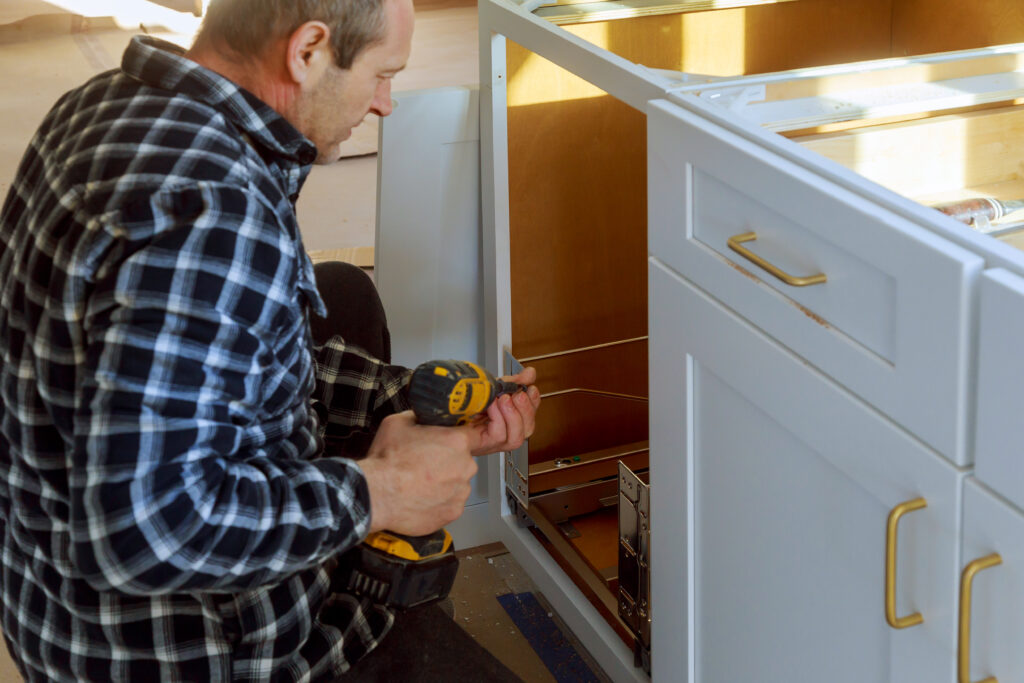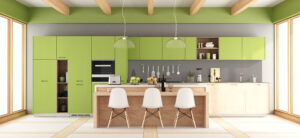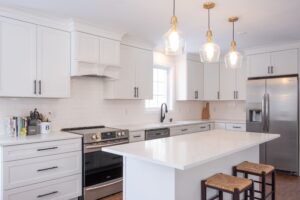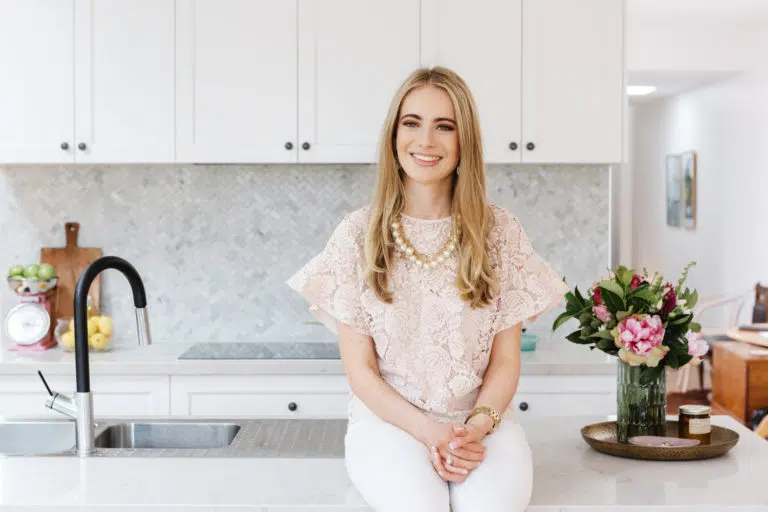Are you bored of looking at the same old kitchen cabinets and cupboard doors? A DIY cabinet refacing project can be a quick and easy way to give your home a new look. Cabinet doors are one of the main focal points of any kitchen, and they often become worn out from everyday use. This guide will provide you with easy-to-follow steps to complete a refacing cabinet project at home.
You will learn how to choose suitable cabinet doors that fit your existing cabinets, select materials, styles, and finishes, prepare for installation, measure and remove old doors and hinges, install new hinges and attach the new door, and apply finishing touches. So, let’s get started on your kitchen renovation journey.
Selecting the Right Pieces
Choosing the right cabinet doors that fit your existing cabinets is an essential step when replacing your cabinet doors. You don’t want to end up with doors that don’t fit or look out of place. It’s crucial to measure your existing cabinet doors and drawer fronts accurately before purchasing new ones. Additionally, you’ll also need to consider any special requirements, such as drilled holes for hinges or handles.
- Materials
When selecting new cabinet doors, there are several factors to consider, including the material, style, and finish. The most common materials for cabinet doors include wood, laminate, and metal. Wood is the most popular option as it’s durable, attractive, and easy to work with. Laminate doors are more affordable and come in a variety of styles, while metal doors are modern and sleek.
- Styles
The style of your cabinet doors is another essential factor to consider. Popular styles include shaker, raised panel, and flat panel. Shaker-style doors are simple and elegant, with a minimalist design that works well in both modern and traditional kitchens. Raised panel doors are more ornate and are ideal for traditional or classic designs. Flat panel doors are sleek and modern, making them a popular choice for contemporary kitchens.
- Finish
The finish of your cabinet doors is also significant, as it can dramatically impact the overall look and feel of your kitchen or bathroom. Natural wood stains are perfect for those who prefer a classic or rustic look. Painted finishes are available in a variety of colors, making it easy to match your cabinet doors to your walls, backsplash, or other elements in your space. Additionally, you may want to consider adding hardware such as knobs or handles to your new cabinet doors to complete the look and make them easier to use.
Preparation for Installing the New Doors
Double check your measurements and ensure that the size and placement of the hinge holes on your new doors match the old ones. Next, inspect your cabinet boxes to ensure they are in good condition. Labeling your new doors and drawer fronts before installation is also a good idea to avoid confusion. Bring all necessary tools and materials for the project, including a drill, screws, a screwdriver, a level, a measuring tape, and a pencil.
Before installing the new doors, it’s essential to ensure that they are prepped and ready for installation. First, sand down any rough spots or sharp edges on the doors to avoid splinters or injuries during installation. Next, check the edges of the doors to make sure they are square, and sand them if necessary to ensure a snug fit.
If you plan on painting your new cabinet doors, make sure to do so before installing them. Painting the doors while they are already installed can be challenging, and it’s easy to get paint or stain on other parts of the cabinet.
Finally, make sure that your workspace is clean and clear of debris before starting the installation process. This will make it easier to move around and work on the cabinets, and it will also help prevent any accidents or injuries.
Measuring for the New Doors
When measuring for new cabinet doors, it’s important to measure accurately to ensure a precise fit. One way to ensure accuracy is to measure twice and then compare the measurements to make sure they match. Suppose they don’t, measure again until you get consistent measurements.
When measuring the height of the door or drawer front, be sure to measure from the top to the bottom of the opening. For the width, measure from left to right, making sure to measure at the widest point of the opening. It’s also a good idea to measure the thickness of the cabinet doors or drawer fronts to ensure that the new doors or fronts you purchase will fit the opening properly.
If you’re replacing doors that have pre-drilled hinge holes, be sure to measure the distance between the holes to make sure that your new doors have holes in the same location. Additionally, if you’re ordering custom doors, specify the location and size of the hinge holes to ensure that they match your existing cabinets.
Removing the Old Doors And Hinges
Remove the screws that attach the hinges to the cabinet box with a screwdriver or power drill. Lift the old door away from the cabinet box, and label each door as you remove it so that you know which door goes where when it’s time to install the new doors. If the old hinges are still in good condition, you can reuse them with the new cabinet doors. However, if the hinges are damaged or outdated, you may want to replace them.
Installing the New Hinges And Attaching the New Door
Start by attaching the hinges to the new doors according to the manufacturer’s instructions. Some hinges may require drilling holes on the door, while others may have pre-drilled holes. Make sure to align the hinges properly, as they will determine the swing and alignment of the door. Hold the new door to the cabinet box, align the hinges with the corresponding holes, and secure the hinges with screws. Repeat this process for each door, ensuring that each one is at the right level and swings correctly.
Finishing Touches for Added Style And Durability
Add new hardware, such as knobs or handles, to your cabinet doors and drawer fronts to give them a new look and make them easier to use. It’s also important to choose the right type of paint or finish for your cabinets, depending on the material they are made of. For example, if you have laminate cabinets, you’ll need to choose a paint or finish that is specifically designed for use on this type of material. Read the label carefully and follow the manufacturer’s instructions for the best results.
Finally, if you want to add some extra style and durability to your cabinets, consider adding some decorative molding or trim. This can give your cabinets a more custom and polished look while also providing extra protection against wear and tear. With the right finishing touches, you can transform your cabinets into a beautiful and functional part of your home for years to come.
Wrapping Up
Replacing your cabinet doors can be an excellent way to update your kitchen or bathroom without the hassle and cost of a full remodel. With a few simple tools and the right materials, you can transform the look and function of your cabinets.
By following the easy-to-follow steps outlined in this article, you can achieve professional-looking results and enjoy your refreshed space for years to come.
If you are not a DIYer, Impressions Kitchens is a perfect choice if you’re looking for a high-quality, custom kitchen design and remodeling experience. Contact us to schedule a consultation with our experienced designers and learn how we can transform your kitchen into the space of your dreams. Let’s work together to create a beautiful and functionally sustainable kitchen.







